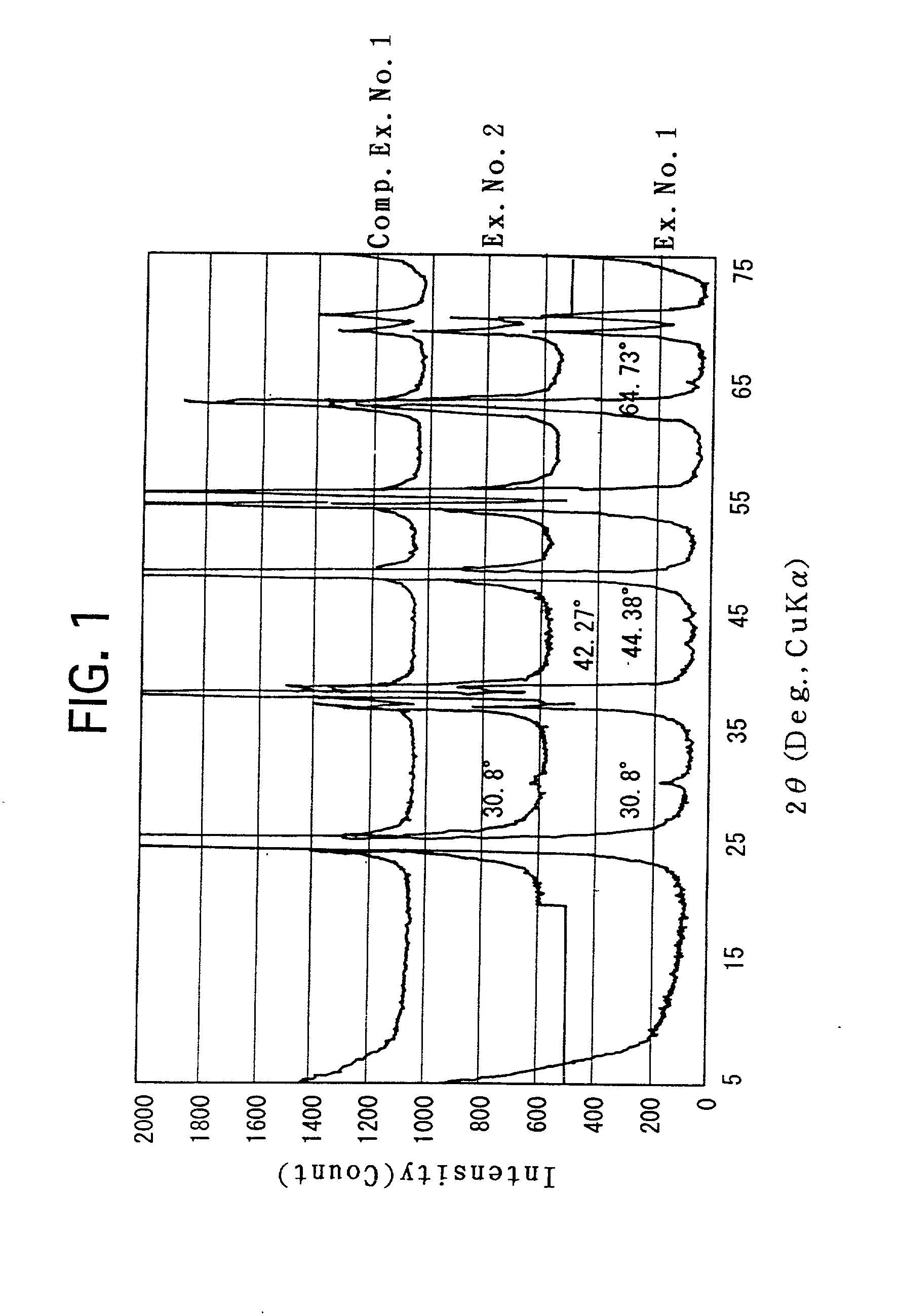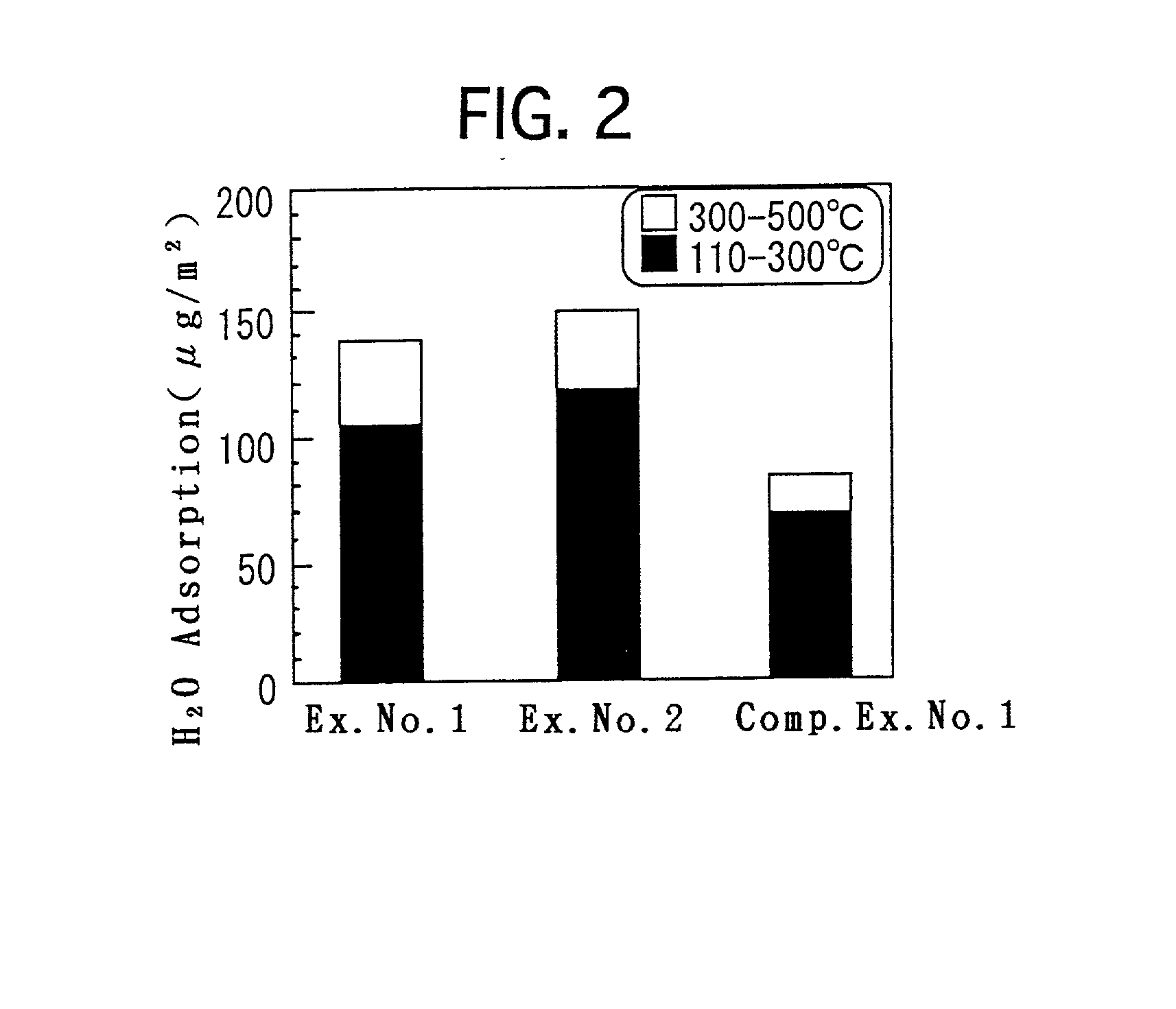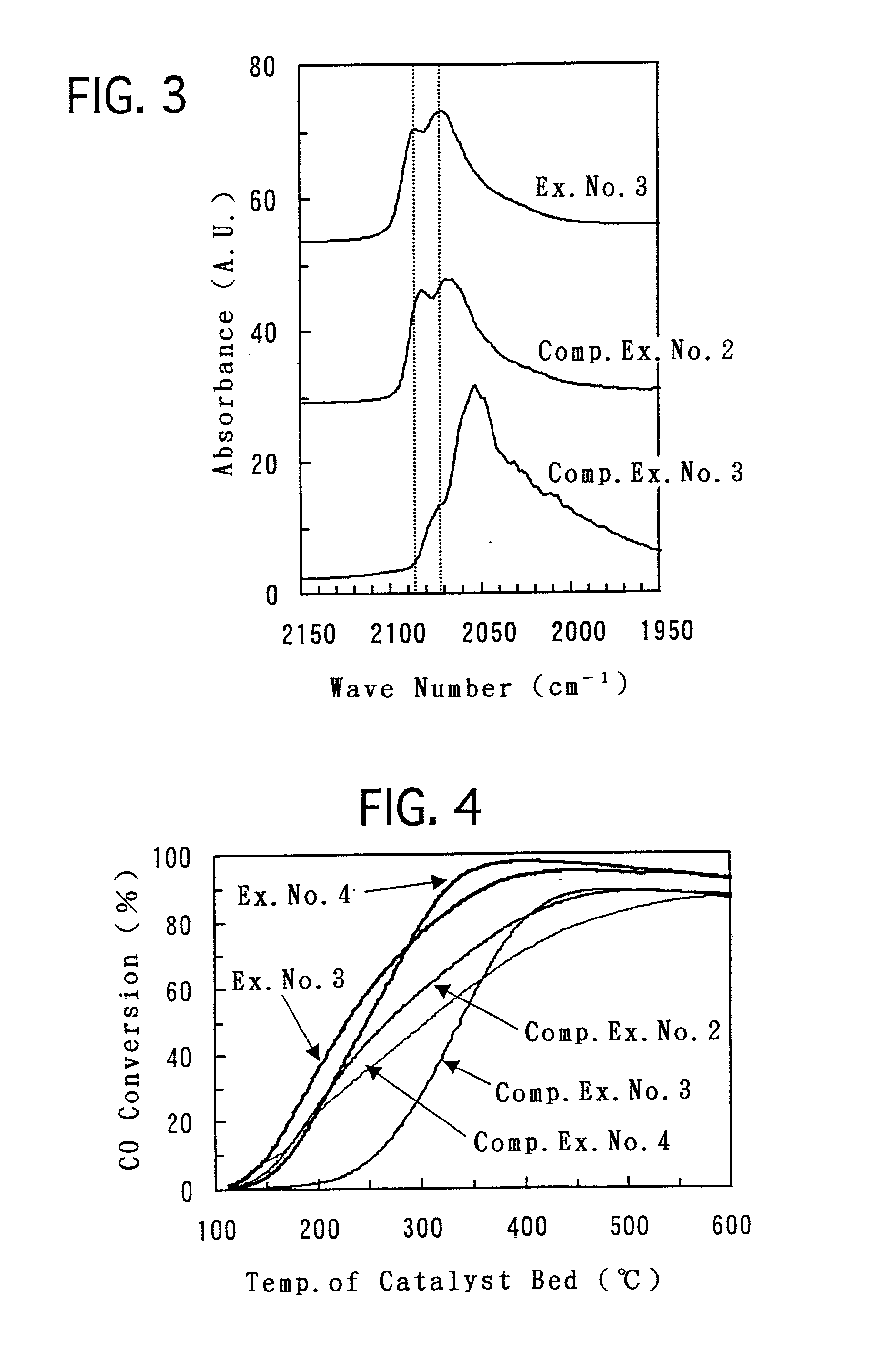Titania-based porous substance and catalyst
a porous substance and titania technology, applied in the field of titania-based porous substances and catalysts, can solve the problems of difficult to produce super fine particulate titania, high temperature, and high cost of catalysts, and achieve the effect of reducing the risk of agglomeration of catalytic ingredients at an elevated temperatur
- Summary
- Abstract
- Description
- Claims
- Application Information
AI Technical Summary
Benefits of technology
Problems solved by technology
Method used
Image
Examples
example no.2
EXAMPLE NO. 2
[0051] Deposits were precipitated in the same manner as Example No. 1. The aging step was similarly carried out. Thereafter, stirring and filtering were repeatedly carried out by using ion-exchange water to wash the deposits. The resulting deposits were dried, and were calcined in the same manner as Example No. 1. The resulting titania porous substance was subjected to the measurements, observation and analysis in the same manner as Example No. 1. The respective resulting values, etc., are set forth in Table 1 or illustrated in FIG. 1.
[0052] Note that, according to the result of the TEM observation, particles, which had an aspect ratio of 2.3 or less, were sparsely agglomerated to form the meso-pores in the titania porous substance of Example No. 2 as well.
example no.3
EXAMPLE NO. 3
[0057] To a powder of the titania porous substance prepared in Example No. 1, Pt was loaded by impregnation by using a dinitrodiammine platinum nitrate aqueous solution so that the Pt was loaded in an amount of 1 g with respect to 100 g of the titania porous substance. Then, after drying the powder, the powder was calcined in air at 300.degree. C. for 3 hours. Finally, after compacting the powder, the resulting compacted substance was pulverized. Thus, a pelletized catalyst of Example No. 3 was prepared which had a particle diameter of from 0.5 to 1.0 mm.
example no.4
EXAMPLE NO. 4
[0058] Except that a powder of the titania porous substance prepared in Example No. 2 was used instead of the titania porous substance prepared in Example No. 1, a pelletized catalyst of Example No. 4 was prepared in the same manner as Example No. 3.
PUM
| Property | Measurement | Unit |
|---|---|---|
| pore diameter | aaaaa | aaaaa |
| diameter | aaaaa | aaaaa |
| diameter | aaaaa | aaaaa |
Abstract
Description
Claims
Application Information
 Login to view more
Login to view more - R&D Engineer
- R&D Manager
- IP Professional
- Industry Leading Data Capabilities
- Powerful AI technology
- Patent DNA Extraction
Browse by: Latest US Patents, China's latest patents, Technical Efficacy Thesaurus, Application Domain, Technology Topic.
© 2024 PatSnap. All rights reserved.Legal|Privacy policy|Modern Slavery Act Transparency Statement|Sitemap



